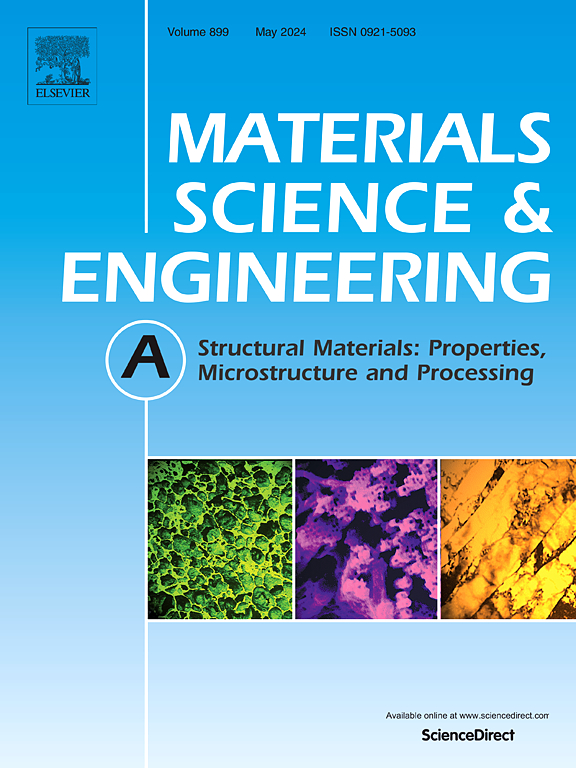添加Ni对等温球墨铸铁应变诱发马氏体的影响
IF 7
2区 材料科学
Q1 MATERIALS SCIENCE, MULTIDISCIPLINARY
引用次数: 0
摘要
本研究系统地研究了添加镍(Ni)对等温球铁(ADI)应变诱导马氏体转变的影响。Ni含量不超过4wt %的ADI基体由针状铁素体和奥氏体组成。随着Ni含量的增加,奥氏体体积分数升高,碳浓度降低。此外,Ni的加入抑制了α-相的形核速率,导致块状奥氏体的数量和尺寸随着Ni含量的增加而增加。在含有2 wt%和4 wt% Ni的ADI中,在块状奥氏体中观察到应变诱导马氏体。值得注意的是,在拉伸试验后,ADI中含有4wt % Ni的大约40%的奥氏体转变为马氏体。这种实质性的相变有效地缓解了应力集中,显著提高了加工硬化能力。此外,块状奥氏体内部还存在同步变形孪晶。因此,实现了卓越的强度-延性平衡,最终抗拉强度为~ 1100mpa,总伸长率为~ 10%。本文章由计算机程序翻译,如有差异,请以英文原文为准。

Influence of Ni addition on strain-induced martensite in austempered ductile iron
This study systematically investigates the effects of nickel (Ni) additions on strain-induced martensitic transformation in austempered ductile iron (ADI). The matrix of ADI containing no more than 4 wt% Ni was composed of acicular ferrite and austenite. Increasing Ni content elevated the austenite volume fraction but reduced its carbon concentration. Furthermore, Ni additions suppressed the nucleation rate of the α-phase, resulting in an increase in both the quantity and size of blocky austenite as Ni content was increased. Strain-induced martensite was observed within the blocky austenite for ADI containing 2 wt% and 4 wt% Ni. Notably, approximately 40 % of the austenite in the ADI containing 4 wt% Ni transformed into martensite following the tensile test. This substantial phase transformation effectively mitigated stress concentrations and significantly enhanced the work-hardening capacity. Moreover, concurrent deformation twinning was observed within the blocky austenite. Consequently, an exceptional strength-ductility balance with an ultimate tensile strength of ∼1100 MPa and a total elongation of ∼10 % was achieved.
求助全文
通过发布文献求助,成功后即可免费获取论文全文。
去求助
来源期刊

Materials Science and Engineering: A
工程技术-材料科学:综合
CiteScore
11.50
自引率
15.60%
发文量
1811
审稿时长
31 days
期刊介绍:
Materials Science and Engineering A provides an international medium for the publication of theoretical and experimental studies related to the load-bearing capacity of materials as influenced by their basic properties, processing history, microstructure and operating environment. Appropriate submissions to Materials Science and Engineering A should include scientific and/or engineering factors which affect the microstructure - strength relationships of materials and report the changes to mechanical behavior.
 求助内容:
求助内容: 应助结果提醒方式:
应助结果提醒方式:


